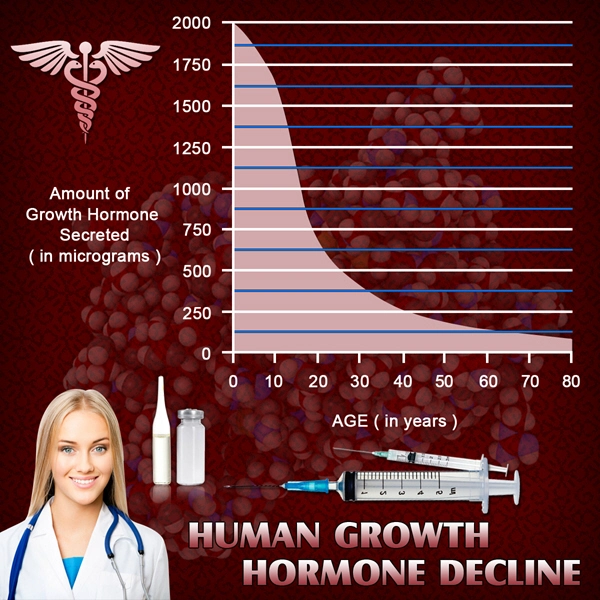Introduction
Tamoxifen, a well-established selective estrogen receptor modulator (SERM), has been a cornerstone in the management of hormone receptor-positive breast cancer. While traditionally associated with female patients, tamoxifen's role in treating male breast cancer and other conditions in men has gained increasing attention. This article explores a novel approach to tailoring tamoxifen treatment for individual American male patients, aiming to optimize therapeutic outcomes while minimizing adverse effects.
The Need for Personalized Tamoxifen Therapy in Men
Male breast cancer, though less common than its female counterpart, presents unique challenges in treatment. Tamoxifen has shown efficacy in this population, but its use in men has been less extensively studied compared to women. Moreover, men may experience different side effects and drug interactions due to physiological differences. A personalized approach to tamoxifen therapy could address these issues, improving patient adherence and quality of life.
Genetic Factors and Tamoxifen Metabolism
One key aspect of personalized medicine is considering genetic variations that affect drug metabolism. The enzyme cytochrome P450 2D6 (CYP2D6) plays a crucial role in converting tamoxifen to its active metabolites. Genetic polymorphisms in the CYP2D6 gene can lead to variable enzyme activity, resulting in differences in tamoxifen efficacy and toxicity. By genotyping American male patients for CYP2D6 variants, clinicians can predict their metabolic status and adjust tamoxifen dosages accordingly.
Monitoring and Adjusting Tamoxifen Doses
Regular monitoring of tamoxifen levels and its metabolites in the blood can provide valuable insights into a patient's response to therapy. For American men, who may have different baseline hormone levels compared to women, this monitoring becomes even more crucial. By adjusting doses based on these measurements, healthcare providers can optimize the balance between efficacy and side effects, such as hot flashes, mood changes, and potential cardiovascular risks.
Considering Concomitant Medications and Lifestyle Factors
Many American men take multiple medications, which can interact with tamoxifen and affect its metabolism. Selective serotonin reuptake inhibitors (SSRIs), commonly used for depression and anxiety, can inhibit CYP2D6 and reduce tamoxifen's effectiveness. Additionally, lifestyle factors such as diet, exercise, and alcohol consumption can influence treatment outcomes. A comprehensive review of a patient's medication list and lifestyle habits is essential for tailoring tamoxifen therapy.
Addressing Side Effects and Quality of Life
While tamoxifen can be highly effective, its side effects can significantly impact a patient's quality of life. For American men, who may have different social and cultural contexts than women, addressing these side effects becomes crucial for treatment adherence. Strategies such as lifestyle modifications, supportive care, and, in some cases, switching to alternative therapies can help mitigate these effects and improve overall well-being.
The Role of Patient Education and Shared Decision-Making
Empowering American male patients with knowledge about their treatment options is vital for successful personalized therapy. Educating patients about the benefits and potential risks of tamoxifen, as well as the rationale behind personalized dosing, can foster trust and improve adherence. Engaging in shared decision-making allows patients to actively participate in their treatment plan, aligning it with their values and preferences.
Future Directions and Research Needs
While the concept of personalized tamoxifen therapy for American men shows promise, further research is needed to validate and refine this approach. Large-scale clinical trials focusing on male patients, as well as studies exploring the long-term outcomes of personalized dosing, are crucial. Additionally, developing more accessible and affordable genetic testing and monitoring tools could facilitate the widespread adoption of this strategy.
Conclusion
Personalizing tamoxifen therapy for American male patients represents a significant step forward in optimizing cancer treatment. By considering genetic factors, monitoring drug levels, accounting for concomitant medications and lifestyle factors, and prioritizing patient education and quality of life, healthcare providers can tailor tamoxifen treatment to individual needs. As research in this field progresses, personalized tamoxifen therapy has the potential to revolutionize the management of male breast cancer and other conditions, improving outcomes and enhancing the lives of American men.

- Understanding Tamoxifen's Role in Combatting Hormonal Cancers in American Men [Last Updated On: February 16th, 2025] [Originally Added On: February 16th, 2025]
- Tamoxifen: A Vital Tool in Treating and Preventing Breast Cancer in American Men [Last Updated On: February 18th, 2025] [Originally Added On: February 18th, 2025]
- Tamoxifen's Role in Reducing Breast Cancer Recurrence in American Males [Last Updated On: February 27th, 2025] [Originally Added On: February 27th, 2025]
- The Multifaceted Implications of Tamoxifen Therapy: An In-depth Review of Side Effects [Last Updated On: March 2nd, 2025] [Originally Added On: March 2nd, 2025]
- Comprehensive Overview of Tamoxifen: Applications in Breast Cancer Treatment, Preventive Therapy, and Beyond [Last Updated On: March 3rd, 2025] [Originally Added On: March 3rd, 2025]
- Exploring Tamoxifen's Role and Risks in Men's Health Management [Last Updated On: March 4th, 2025] [Originally Added On: March 4th, 2025]
- Exploring Tamoxifen's Role in Managing Men's Hormone-Driven Health Conditions [Last Updated On: March 5th, 2025] [Originally Added On: March 5th, 2025]
- Exploring Tamoxifen's Role in Treating Hormone-Sensitive Cancers in Adolescent Males [Last Updated On: March 6th, 2025] [Originally Added On: March 6th, 2025]
- Tamoxifen in Male Breast Cancer: Mechanism, Benefits, and Considerations for Treatment Success [Last Updated On: March 7th, 2025] [Originally Added On: March 7th, 2025]
- Unraveling Tamoxifen Resistance in Breast Cancer Therapy: Mechanisms, Impacts, and Strategies [Last Updated On: March 8th, 2025] [Originally Added On: March 8th, 2025]
- Optimizing Men's Health: Tamoxifen's Role in Pre and Post-Surgical Interventions [Last Updated On: March 9th, 2025] [Originally Added On: March 9th, 2025]
- Optimizing Tamoxifen Dosage for Effective Breast Cancer Treatment in American Males [Last Updated On: March 12th, 2025] [Originally Added On: March 12th, 2025]
- Tamoxifen's Potential in Treating Pediatric Cancers: Focus on Young American Males [Last Updated On: March 13th, 2025] [Originally Added On: March 13th, 2025]
- Unveiling the Risks: A Comprehensive Look at Long-Term Tamoxifen Use in American Males [Last Updated On: March 15th, 2025] [Originally Added On: March 15th, 2025]
- Tamoxifen Therapy in Males: Managing Drug Interactions and Enhancing Efficacy [Last Updated On: March 17th, 2025] [Originally Added On: March 17th, 2025]
- Tamoxifen in Men: Uses, Effects, and Management for American Males [Last Updated On: March 18th, 2025] [Originally Added On: March 18th, 2025]
- Tamoxifen's Role in Reducing Breast Cancer Mortality in American Males [Last Updated On: March 18th, 2025] [Originally Added On: March 18th, 2025]
- Tamoxifen's Efficacy and Impact on American Males with Breast Cancer [Last Updated On: March 19th, 2025] [Originally Added On: March 19th, 2025]
- Tamoxifen for Men: Benefits, Risks, and Breast Cancer Treatment Decisions [Last Updated On: March 19th, 2025] [Originally Added On: March 19th, 2025]
- Tamoxifen's Role in Inhibiting Cancer Growth: Insights for American Males [Last Updated On: March 20th, 2025] [Originally Added On: March 20th, 2025]
- Tamoxifen: A Vital Guide for American Men with Breast Cancer [Last Updated On: March 20th, 2025] [Originally Added On: March 20th, 2025]
- Tamoxifen's Role in Leukemia: Mechanisms, Clinical Evidence, and Future Prospects [Last Updated On: March 20th, 2025] [Originally Added On: March 20th, 2025]
- Tamoxifen's Role in Male Health: Managing Gynecomastia, Infertility, and Cardiovascular Risks [Last Updated On: March 21st, 2025] [Originally Added On: March 21st, 2025]
- Managing Tamoxifen Side Effects in American Men: Strategies and Support [Last Updated On: March 21st, 2025] [Originally Added On: March 21st, 2025]
- Tamoxifen's Efficacy in Treating Hormone-Sensitive Cancers in American Males [Last Updated On: March 21st, 2025] [Originally Added On: March 21st, 2025]
- Tamoxifen's Role in Treating Male Breast Cancer: Insights and Management Strategies [Last Updated On: March 22nd, 2025] [Originally Added On: March 22nd, 2025]
- Tamoxifen in American Males: Benefits, Risks, and Management Strategies for Breast Cancer [Last Updated On: March 22nd, 2025] [Originally Added On: March 22nd, 2025]
- Tamoxifen in American Males: Benefits, Applications, and Considerations in Hormone Therapy [Last Updated On: March 22nd, 2025] [Originally Added On: March 22nd, 2025]
- Tamoxifen's Expanding Role in Male Breast Cancer Treatment and Research in the U.S. [Last Updated On: March 22nd, 2025] [Originally Added On: March 22nd, 2025]
- Tamoxifen in Recurrent Cancer: Benefits, Challenges, and Monitoring for American Males [Last Updated On: March 22nd, 2025] [Originally Added On: March 22nd, 2025]
- Tamoxifen: A Vital Treatment for Men with Hormone Receptor-Positive Breast Cancer [Last Updated On: March 22nd, 2025] [Originally Added On: March 22nd, 2025]
- Tamoxifen's Role in Managing Estrogen Fluctuations in American Men [Last Updated On: March 23rd, 2025] [Originally Added On: March 23rd, 2025]
- Tamoxifen: Benefits and Myths for American Males with Breast Cancer [Last Updated On: March 23rd, 2025] [Originally Added On: March 23rd, 2025]
- Tamoxifen: A Vital Tool in Treating Male Breast Cancer in America [Last Updated On: March 24th, 2025] [Originally Added On: March 24th, 2025]
- Tamoxifen's Role in Treating and Preventing Male Breast Cancer in America [Last Updated On: March 24th, 2025] [Originally Added On: March 24th, 2025]
- Tamoxifen-Induced Depression in American Males: Mechanisms, Prevalence, and Management [Last Updated On: March 24th, 2025] [Originally Added On: March 24th, 2025]
- Overcoming Tamoxifen Resistance in American Males: Strategies and Insights [Last Updated On: March 24th, 2025] [Originally Added On: March 24th, 2025]
- Tamoxifen's Impact on Male Ovarian Function: Effects, Management, and Future Research [Last Updated On: March 24th, 2025] [Originally Added On: March 24th, 2025]
- Tamoxifen's Role in Enhancing Breast Cancer Cure Rates in American Males [Last Updated On: March 24th, 2025] [Originally Added On: March 24th, 2025]
- Exploring Tamoxifen Alternatives for Male Breast Cancer Treatment in American Males [Last Updated On: March 24th, 2025] [Originally Added On: March 24th, 2025]
- Tamoxifen Therapy in American Males: Strategies for Preserving Bone Health [Last Updated On: March 24th, 2025] [Originally Added On: March 24th, 2025]
- Genomic Predictors of Tamoxifen Response in American Male Breast Cancer Patients [Last Updated On: March 25th, 2025] [Originally Added On: March 25th, 2025]
- Tamoxifen: Revolutionizing Hormone Therapy for American Males with Cancer [Last Updated On: March 25th, 2025] [Originally Added On: March 25th, 2025]
- Tamoxifen: A Vital Treatment for Advanced Breast Cancer in American Men [Last Updated On: March 25th, 2025] [Originally Added On: March 25th, 2025]
- Tamoxifen's Role in Molecular Oncology for American Males: Benefits and Considerations [Last Updated On: March 25th, 2025] [Originally Added On: March 25th, 2025]
- Tamoxifen: A Promising Treatment for Rare Cancers in American Males [Last Updated On: March 25th, 2025] [Originally Added On: March 25th, 2025]
- Tamoxifen Drug Interactions: Critical Considerations for Male Breast Cancer Treatment [Last Updated On: March 26th, 2025] [Originally Added On: March 26th, 2025]
- Tamoxifen Therapy for American Males: Managing Early-Stage Breast Cancer [Last Updated On: March 26th, 2025] [Originally Added On: March 26th, 2025]
- Tamoxifen's Role in Treating and Preventing Male Breast Cancer: A Comprehensive Guide [Last Updated On: March 26th, 2025] [Originally Added On: March 26th, 2025]
- Tamoxifen: Reducing Tumor Size and Preventing Recurrence in American Males with Breast Cancer [Last Updated On: March 26th, 2025] [Originally Added On: March 26th, 2025]
- Tamoxifen's Role in Treating Endocrine Cancers in American Males: A New Frontier [Last Updated On: March 26th, 2025] [Originally Added On: March 26th, 2025]
- Tamoxifen: Hope and Treatment for American Men with Cancer [Last Updated On: March 26th, 2025] [Originally Added On: March 26th, 2025]
- Tamoxifen's Role in Revolutionizing Male Breast Cancer Treatment in America [Last Updated On: March 26th, 2025] [Originally Added On: March 26th, 2025]
- Tamoxifen's Long-Term Effects on Women's Health: Insights for American Males [Last Updated On: March 26th, 2025] [Originally Added On: March 26th, 2025]
- Tamoxifen: Preventing High-Risk Breast Cancer in Men [Last Updated On: March 26th, 2025] [Originally Added On: March 26th, 2025]
- Tamoxifen Use and Cataract Risk in American Males: A Detailed Analysis [Last Updated On: March 27th, 2025] [Originally Added On: March 27th, 2025]
- Tamoxifen: Gold Standard for Male Breast Cancer Treatment in American Men [Last Updated On: March 27th, 2025] [Originally Added On: March 27th, 2025]
- Tamoxifen's Role in Treating Hormonal Cancers in American Males: Efficacy and Future Prospects [Last Updated On: March 28th, 2025] [Originally Added On: March 28th, 2025]
- Tamoxifen's Impact on Endocrine Function in Male Breast Cancer Patients [Last Updated On: March 28th, 2025] [Originally Added On: March 28th, 2025]
- Tamoxifen: A Promising Non-Surgical Treatment for Gynecomastia in American Males [Last Updated On: March 28th, 2025] [Originally Added On: March 28th, 2025]
- Tamoxifen in Male Breast Cancer: Benefits, Risks, and Long-Term Considerations [Last Updated On: March 29th, 2025] [Originally Added On: March 29th, 2025]
- Tamoxifen's Molecular Dynamics in Treating Male Breast Cancer in American Males [Last Updated On: March 29th, 2025] [Originally Added On: March 29th, 2025]
- Tamoxifen Therapy in American Men: Balancing Risks and Benefits in Advanced Cancer Treatment [Last Updated On: March 29th, 2025] [Originally Added On: March 29th, 2025]
- Tamoxifen's Role in Treating Male Breast Cancer: Efficacy and Considerations for American Men [Last Updated On: March 30th, 2025] [Originally Added On: March 30th, 2025]
- Tamoxifen: A New Hope for Male Infertility Treatment in American Men [Last Updated On: March 31st, 2025] [Originally Added On: March 31st, 2025]
- Tamoxifen: A Vital Tool in Treating and Preventing Male Breast Cancer [Last Updated On: April 1st, 2025] [Originally Added On: April 1st, 2025]
- Molecular Determinants of Tamoxifen Therapy in American Males with Breast Cancer [Last Updated On: April 2nd, 2025] [Originally Added On: April 2nd, 2025]
- Tamoxifen Toxicity in American Males: Mechanisms, Risks, and Management Strategies [Last Updated On: April 2nd, 2025] [Originally Added On: April 2nd, 2025]
- Tamoxifen's Cardiovascular Impact on American Males: Benefits and Risks [Last Updated On: April 6th, 2025] [Originally Added On: April 6th, 2025]
- Tamoxifen's Role in Preventing and Treating Male Breast Cancer: A Comprehensive Overview [Last Updated On: April 6th, 2025] [Originally Added On: April 6th, 2025]
- Optimizing Tamoxifen Efficacy in American Males with Breast Cancer Using Adjunct Therapies [Last Updated On: April 7th, 2025] [Originally Added On: April 7th, 2025]
- Tamoxifen: Key Insights into Its Role in Male Breast Cancer Management [Last Updated On: April 7th, 2025] [Originally Added On: April 7th, 2025]
- Tamoxifen Therapy in American Males: Efficacy, Side Effects, and Prevention in Breast Cancer [Last Updated On: April 8th, 2025] [Originally Added On: April 8th, 2025]
- Tamoxifen's Efficacy in Advanced Male Breast Cancer: U.S. Case Studies [Last Updated On: April 9th, 2025] [Originally Added On: April 9th, 2025]
- Tamoxifen's Role in Chemoprevention for American Males: Efficacy, Risks, and Research [Last Updated On: April 9th, 2025] [Originally Added On: April 9th, 2025]
- Tamoxifen's Dual Impact on Endometrial Cancer in Male and Female Patients [Last Updated On: April 10th, 2025] [Originally Added On: April 10th, 2025]
- Tamoxifen's Untapped Potential: Benefits for Men's Health Beyond Breast Cancer [Last Updated On: April 11th, 2025] [Originally Added On: April 11th, 2025]
- Tamoxifen: A Vital Tool in Managing Breast Cancer in American Men [Last Updated On: April 12th, 2025] [Originally Added On: April 12th, 2025]
- Tamoxifen in American Men: Experiences, Side Effects, and Long-Term Health Impacts [Last Updated On: April 12th, 2025] [Originally Added On: April 12th, 2025]
- Tamoxifen's Role in Preventing Cancer in American Men: A Comprehensive Overview [Last Updated On: April 12th, 2025] [Originally Added On: April 12th, 2025]



List of USA state clinics - click a flag below for blood testing clinics.
Word Count: 647



















































